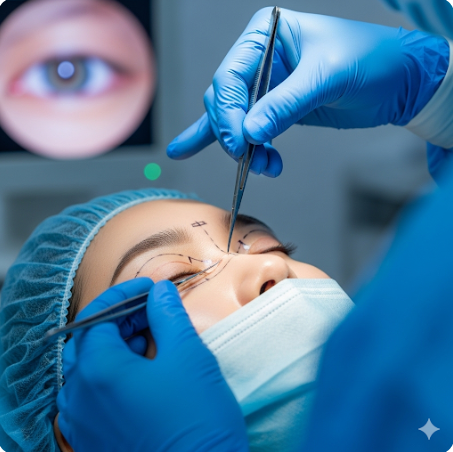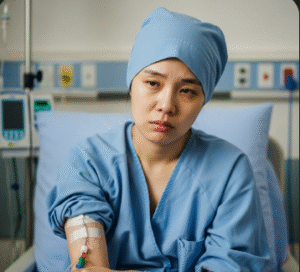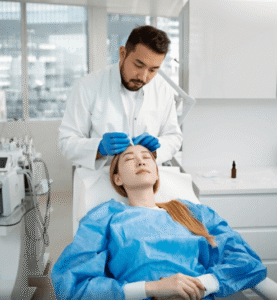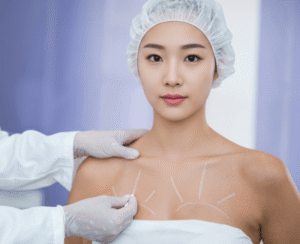What It Is
Double eyelid surgery, also known as blepharoplasty for creating a supratarsal crease, is one of the most popular cosmetic procedures in Korea. It involves reshaping the upper eyelid to create a natural-looking fold that enhances eye definition and makes the eyes appear larger, brighter, and more symmetrical.
There are different surgical methods in Korea:
- Incisional technique: Creates a permanent fold by removing excess skin, fat, or muscle.
- Non-incisional (suture) technique: Uses sutures to create a crease without large incisions; less invasive and reversible.
- Partial incision technique: A hybrid method combining both approaches.
Why It’s Done
Patients choose double eyelid surgery because:
- They want to create a supratarsal crease for more defined eyes.
- Asymmetrical eyelids or monolids affect their appearance.
- Excess eyelid skin causes heaviness or blocks light, making eyes look smaller.
- They desire a youthful, refreshed appearance.
Good candidates include:
- Individuals with monolids or asymmetrical double eyelids.
- Patients seeking brighter, larger eyes with a natural crease.
- Those in good health with realistic expectations.
Alternatives
- Eyelid tape or glue: Temporary methods to create a crease without surgery.
- Botox or fillers: Can adjust eyelid shape subtly but do not create a fold.
- No treatment: For patients satisfied with their natural eyelids.
Preparation
Before double eyelid surgery in Korea, patients will:
- Undergo consultation and digital simulations to choose crease height and shape.
- Stop smoking and alcohol 2–4 weeks before surgery.
- Avoid blood-thinning medications and certain supplements.
- Plan for downtime, especially if using the incisional method.
How It’s Done
- Anesthesia: Local anesthesia with sedation.
- Incisional method: Excess skin, fat, or muscle is removed; a crease is created with sutures.
- Non-incisional method: Tiny punctures are made, and sutures are threaded to form a fold.
- Partial incision: Combines both approaches for more customization.
- Duration: 1–2 hours, outpatient procedure.
Recovery
- First week: Swelling and bruising are common; cold compresses recommended.
- Return to activities: 5–7 days for non-incisional, 1–2 weeks for incisional.
- Final results: Natural crease visible within 1–3 months as swelling subsides.
Possible Complications
- Asymmetry between eyelids.
- Visible scarring (more likely in incisional method).
- Over- or under-correction of crease height.
- Temporary dryness or irritation.
- Rare risks: infection, bleeding, or crease loosening.
Treatment Options in Korea
Diagnosis
Korean surgeons use eye measurements, digital photography, and crease simulations to design a crease that matches the patient’s natural anatomy and desired look.
Medical Treatments
- Eyelid tape or glue for non-surgical, temporary results.
Surgical or Advanced Therapies
- Non-incisional (suture) method for subtle, reversible results with faster recovery.
- Incisional method for permanent, precise correction (especially for thick or droopy eyelids).
- Partial incision method for a balance of natural appearance and durability.
Rehabilitation and Support
- Cold compresses, eye drops, and ointments for recovery.
- Scar care (for incisional method) with silicone gels or laser if needed.
- Follow-up visits for symmetry checks and long-term results.
- International patients benefit from Korea’s specialized eyelid surgeons, artistic eye design, and natural-looking results.













